#Trump moves Obama, Bush portraits to hidden stairwell
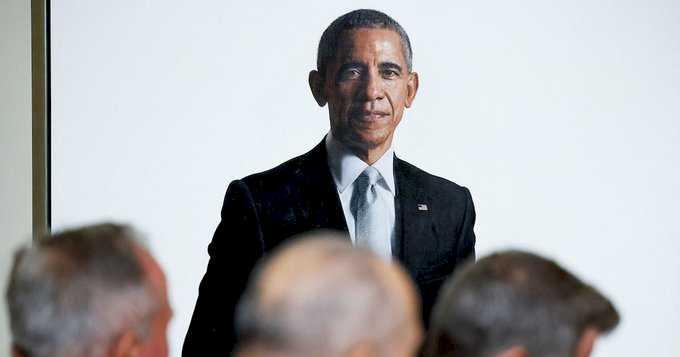
Two #Japanese boxers die from brain injuries in separate bouts. Shigetoshi Kotari, 28, collapsed shortly after completing a 12-round draw against Oriental and Pacific Boxing Federation junior lightweight champion Yamato Hata on Aug. 2.
He underwent emergency brain surgery for a subdural hematoma — a condition where blood collects between the brain and skull— but died on Friday.
“Rest in peace, Shigetoshi Kotari,” the World Boxing Organization wrote on social media. “The boxing world mourns the tragic passing of Japanese fighter Shigetoshi Kotari, who succumbed to injuries sustained during his August 2nd title fight.
“A warrior in the ring. A fighter in spirit. Gone too soon. Our thoughts and prayers are with his family, team, and the entire Japanese boxing community.”
On Saturday, fellow 28-year-old Hiromasa Urakawa died after suffering the same injury during a knockout loss to Yoji Saito. He had undergone a craniotomy in an attempt to save his life.
“This heartbreaking news comes just days after the passing of Shigetoshi Kotari, who died from injuries suffered in his fight on the same card,” the WBO said in another social media post on Saturday. ”We extend our deepest condolences to the families, friends, and the Japanese boxing community during this incredibly difficult time.”
In response, the Japanese Boxing Commission has announced all OPBF title bouts will now be reduced from 12 rounds to 10.
Earlier this year, Irish boxer John Cooney died a week after being taken into intensive care following his Celtic super-featherweight title defeat to Nathan Howells in Belfast.
The Associated Press
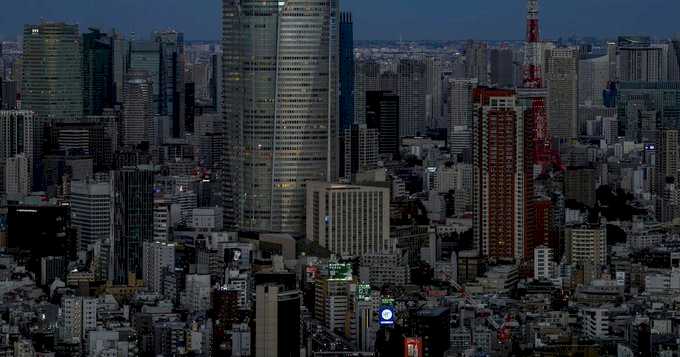
View 177 times
#Israel faces growing condemnation over military expansion in #Gaza. Ceasefire efforts appeared to be reviving with Israel’s announcement. U.S. special envoy Steve Witkoff was expected to meet with Qatar’s prime minister in Spain on Saturday to discuss a new proposal to end the war, according to two officials familiar with the talks, who spoke on condition of anonymity because they weren’t authorized to speak with the media.
Mediators Egypt and Qatar are preparing a new ceasefire framework that would include the release of all hostages — dead and alive — in one go in return for the war’s end and the withdrawal of Israeli forces, two Arab officials have told The Associated Press.
Health officials said that 20 Palestinians seeking aid were shot dead Saturday and 11 adults died of malnutrition-related causes in the past 24 hours, as the criticism of Israel came with pleas to allow far more food to reach people in the besieged enclave.
‘Shut the country down’
Hostages’ families pressured Prime Minister Benjamin Netanyahu’s government amid new fears for the 50 remaining hostages, with 20 of them thought to be alive and struggling.
Einav Zangauker, whose son Matan is held in Gaza, called on Israelis including the powerful Histadrut labor union to “help us save the hostages, the soldiers and the state of Israel” and appeared to call for a general strike: “Shut the country down.”
A joint statement by nine countries including Germany, Britain, France and Canada said that they “strongly reject” Israel’s decision for the large-scale military operation, saying it will worsen the “catastrophic humanitarian situation,” endanger hostages and further risk mass displacement. They said any attempts at annexation or settlement in Gaza violate international law.
A separate statement by more than 20 countries including ceasefire mediators Egypt and Qatar along with Saudi Arabia, Turkey and the United Arab Emirates called Israel’s decision a “dangerous and unacceptable escalation.” Meanwhile, Russia said Israel’s plan will aggravate the “already extremely dramatic situation” in Gaza.
The U.N. Security Council planned an emergency meeting Sunday.
Killed while seeking aid
Officials at Nasser and Awda hospitals said that Israeli forces killed at least 11 people seeking aid in southern and central Gaza. Some had been waiting for aid trucks, while others had approached aid distribution points.
Israel’s military denied opening fire and said that it was unaware of the incidents. The military secures routes leading to distribution sites run by the Israeli-backed and U.S.-supported Gaza Humanitarian Foundation, which didn’t immediately respond to a request for comment.
Two witnesses told the AP that Israeli troops fired toward crowds approaching a GHF distribution site on foot in the Netzarim corridor, a military zone that bisects Gaza. One witness, Ramadan Gaber, said that snipers and tanks fired on aid-seekers, forcing them to retreat.
In the north, Israeli fire killed at least nine and wounded over 200 as people sought aid entering Gaza through the Zikim crossing, said Fares Awad, head of the Health Ministry’s ambulance and emergency service in the area. There was no immediate Israeli comment.
In Deir al-Balah in central Gaza, some aid-seekers cheered the latest airdrops of aid. Hundreds of people rushed to grab what they could. Aid organizations have called airdrops expensive, insufficient and potentially dangerous for people on the ground.
Israel’s military said that at least 106 packages of aid were airdropped Saturday as Italy and Greece joined the effort for the first time. Footage from Italy’s defense ministry showed packages parachuted over Gaza’s dry and devastated landscape.
Barefoot children collected rice, pasta and lentils that spilled from packages onto the ground.
“This way is not for humans, it is for animals,” said one man, Mahmoud Hawila, who said he was stabbed while trying to secure an airdropped package.
Israel alleges, without giving evidence, that Hamas systematically diverts aid from the existing U.N.-led system, which denies it. That system has called for more of the trucks waiting outside Gaza to be allowed not just into the territory, but safely to destinations inside it for distribution.
With temperatures reaching above 90 degrees F (32 degrees C) in Gaza, families fanned themselves with pieces of cardboard or metal trays and slept on the ground outside their tents, while some women collected water well before dawn.
“My children cry day and night. My son scratches his body because of the heat,” said Nida Abu Hamad, whose displaced family shelters in Gaza City.
More deaths from hunger
Gaza’s Health Ministry said the new adult deaths from malnutrition-related causes over the past 24 hours brought the total to 114 since it began counting such deaths in June. It said that 98 children have died of malnutrition-related causes since the war began with the Hamas-led attack on southern Israel on Oct. 7, 2023, with militants killing around 1,200 people and abducting 251.
Israel is “forcing Palestinians into a state of near-starvation to the point that they abandon their land voluntarily,” Turkish Foreign Minister Hakan Fidan told a news conference in Egypt.
The toll from hunger isn’t included in the ministry’s death toll of 61,300 Palestinians in the war. The ministry, part of the Hamas-run government and staffed by medical professionals, doesn’t distinguish between fighters or civilians, but says around half of the dead have been women and children. The U.N. and independent experts consider it the most reliable source on war casualties.
Israel disputes the ministry’s figures, but hasn’t provided its own.
Wafaa Shurafa, Sam Metz And Samy Magdy, The Associated Press
Metz reported from Jerusalem and Magdy from Cairo. Sam Mednick in Tel Aviv, Israel, and Matthew Lee in Washington, contributed to this report.
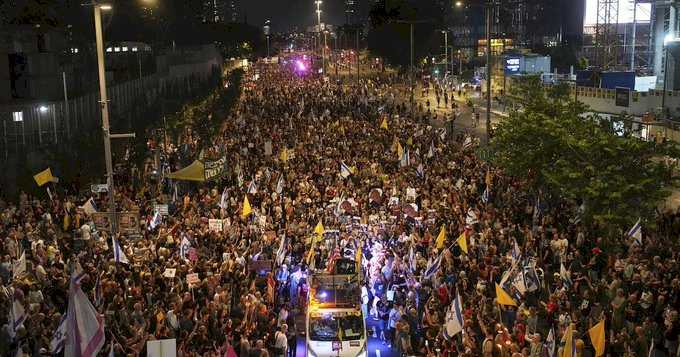
View 175 times
Michigan Gov. told #Trump in private that auto jobs depend on a tariff change of course

View 174 times
#Kremlin confirms that Putin-Trump summit to take place in Alaska on August 15
"It seems quite logical that our delegation should simply fly across the Bering Strait, and that such an important and long-awaited summit between the leaders of the two countries should be held there," Kremlin aide Yury Ushakov said
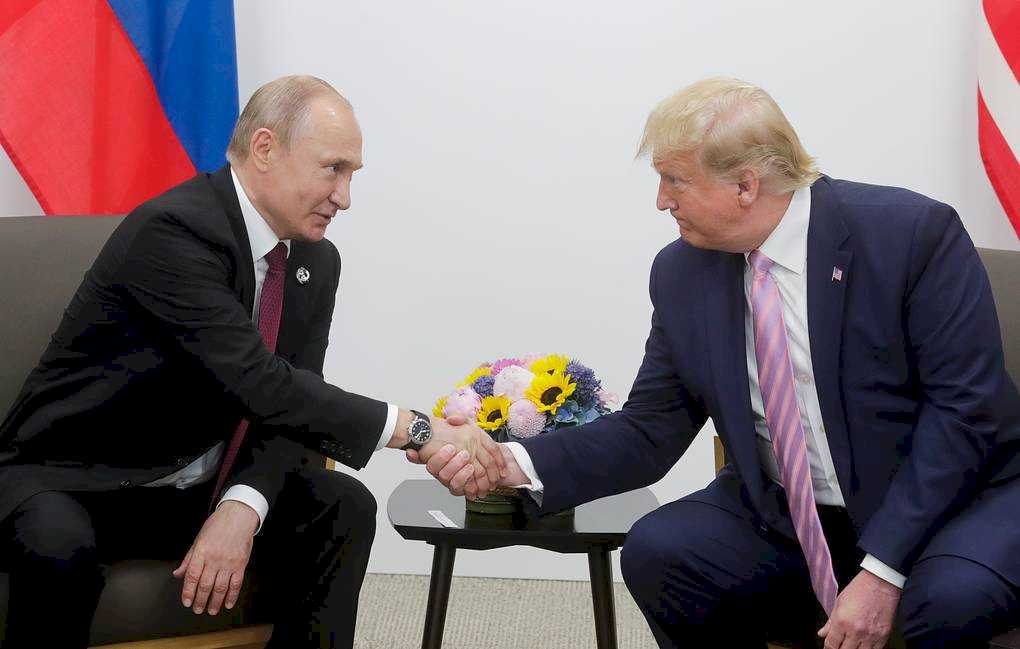
View 179 times
Gold futures hit record on U.S. tariff shock; mixed day for stocks. Gold futures hit a record high Friday following reports of an unexpected tariff on the precious metal as global stocks finished the week on a mixed note.
Wall Street enjoyed a sunny Friday led by the tech-rich Nasdaq Composite Index, which posted a second straight record, part of a buoyant session in New York amid optimism over artificial intelligence and less uncertainty over trade policy.
Investors are growing confident that U.S. President Donald Trump’s constantly changing U.S. trade policy won’t derail the surge in investment around artificial intelligence.
“Part of the relief was that the tariffs on a very important sector around the U.S. outlook on earnings, which is tech and AI, is mostly left unaffected,” said Angelo Kourkafas, senior global investment strategist at Edward Jones.
Apple, which pledged increased U.S. investment at a White House meeting this week, won 4.2 per cent, its third straight significant gains. Nvidia and Google parent Alphabet also advanced.
Gold futures shot to a new all-time intraday high at US$3,534.10 an ounce after the Financial Times reported that Washington had classified one-kilo bars, the most traded type of bullion on Comex -- the world’s biggest futures market, as subject to “reciprocal” tariff rates.
One-kilo bars make up the largest part of Switzerland’s gold shipments to the United States. Imports from Switzerland face a 39-percent reciprocal tariff from Thursday. The FT said 100-ounce bars would also face the levy.
The levy caused “shock and confusion” in markets, said Han Tan, chief market analyst at Nemo.money trading group.
After hitting the high, the gold future price later pulled back to around US$3,454 an ounce.
A White House official told AFP that the Trump administration plans to “issue an executive order in the near future clarifying misinformation about the tariffing of gold bars and other specialty products.”
In European trading, both London’s FTSE 100 and Frankfurt dipped, while Paris stocks edged higher.
Japanese stocks led the way on a mostly negative day for Asian markets, fueled by relief that Tokyo and Washington had settled a tariff issue that raised concerns about their trade deal.
“Since the tariff agreement between the US and the European Union, some clarity has emerged, but confusion around its implementation is just beginning to surface,” said Jochen Stanzl, chief market analyst at CMC Markets.
“In Japan, there is relief today upon hearing that the various tariffs will not be cumulative,” he added.
The Nikkei 225 stocks index jumped nearly two percent after Japan’s tariffs envoy said Washington was expected to revise an executive order that stacked tariffs on top of each other.
“However, it remains unclear whether the same rules apply for Japan and the EU,” Stanzl added.

View 179 times
Former #FBI and #CIA Director William H. Webster dies at 101. Webster led the FBI from 1978 to 1987 and the CIA from 1987 to 1991, the only person to guide the nation’s top law-enforcement agency and its primary intelligence-gathering organization.
By the time he came to Washington, at age 53, Webster had practiced law for nearly 20 years, had served a stint as a federal prosecutor and had spent almost nine years on the federal bench in his native St. Louis. Those who opposed him in court or disagreed with his rulings acknowledged that his honesty was beyond question.
“Every director of the CIA or the FBI should be prepared to resign in the event that he is asked to do something that he knows is wrong,” Webster said after he agreed to lead the spy agency.
U.S. President Jimmy Carter selected Webster, a Republican, for a 10-year term as FBI chief as the bureau sought to improve an image tarnished by revelations of domestic spying, internal corruption and other abuses of power. Demanding but fair of his agents, he was generally credited with developing its ability to handle new challenges such as terrorism.
U.S. President Ronald Reagan chose Webster to replace CIA chief William J. Casey, who had been criticized for being too political, ignoring Congress and playing a part in the arms-for-hostages scandal known as Iran-Contra.
Webster, again in the role of outsider with no political agenda, quickly sought to ease tensions with Congress. He reported regularly on the CIA’s activities to lawmakers charged with intelligence oversight and avoided the appearance of trying to shape policy. Retiring from federal service in 1991, he joined a Washington law firm but still served on a variety of policy-related boards and commissions.
In 2002, the Securities and Exchange Commission selected Webster, on a partisan vote, to lead a board created by Congress to oversee the accounting profession in the wake of scandals involving Enron and other corporations.
Before the board’s first meeting, however, Webster resigned amid questions about his role as head of the audit committee of U.S. Technologies, a company itself accused of fraud. The controversy over his role in Webster’s appointment contributed to the resignation of SEC Chair Harvey Pitt.
William Hedgcock Webster was born on March 6, 1924, in St. Louis. He was raised in the suburb of Webster Groves, Missouri, his father the owner of ranch and farm land and the operator of small businesses. He served as a Navy lieutenant during World War II and returned to active duty for two years during the Korean War. He graduated from Amherst College with a bachelor’s degree in 1947 and earned a law degree from Washington University Law School in St. Louis in 1949.
Webster practiced law with a St. Louis firm until 1960, when President Dwight D. Eisenhower appointed him U.S. attorney for the Eastern District of Missouri. He resigned the following year after President John F. Kennedy’s election and then spent most of the 1960s in private practice. Appointed by President Richard Nixon to the U.S. District Court for the Eastern District of Missouri in 1971, Webster established a reputation as a moderate jurist. Nixon elevated Webster to the 8th U.S. Circuit Court of Appeals in 1973.
“I think of myself as operating from a position of restraint but being ready to take any judicial actions necessary to achieve the ends of justice,” Webster said as he closed his judicial career to join the FBI. Critics, however, faulted him for a tendency to favor the prosecution in criminal cases.
Liberals and conservatives commended Webster for an even-handed record on civil rights, even though he was a member of St. Louis social organizations that excluded minorities. He contended that he would not belong to any club that actively practiced racism. As FBI director, he brought more Black people and women into the bureau. Replacing Clarence M. Kelley, Webster focused the FBI’s efforts on organized crime, white-collar offenders and drug enforcement.
Highlighting attention to political corruption was the Abscam sting, in which officials offered bribes to bureau employees posing as Middle Eastern businessmen. Eleven people, including six members of Congress, were convicted.
Webster also stepped up the FBI’s anti-terrorism and counterintelligence activities, which helped prepare him for the CIA post. Some who questioned his appointment as director of central intelligence contended that his lack of operational experience and foreign affairs experience was a detriment.
Webster was credited with building morale within the CIA and beginning its shift from a Cold War stance. The agency was accused, some claimed unfairly, of not anticipating how quickly the Soviet Union and its Eastern bloc would crumble and not doing more in advance of Saddam Hussein’s invasion of Kuwait in 1991. It was commended for the intelligence it provided during the Gulf War.
Over a nine-year period that included Webster’s term, CIA officer Aldrich Ames sold secrets to the Soviet Union and compromised dozens of operations before he was arrested and sentenced to life in prison without parole in 1994. Webster and other CIA chiefs were criticized for failing to detect Ames’ activities.
In retirement, Webster served on a presidential panel on homeland security after the Sept. 11, 2001, terrorist attacks and was a member of a commission investigating security lapses at the FBI.
Webster, a Christian Scientist who did not smoke, seldom drank and enjoyed playing tennis and reading history, married Drusilla Lane Webster in 1950; they raised two daughters and one son. Following her death from cancer in 1984, he married Lynda Jo Clugston in 1990.
Webster is survived by his second wife, three children from his first marriage and their spouses, seven grandchildren and spouses and 12 great-grandchildren. A memorial service will be held in Washington on Sept. 18.
Douglass K. Daniel, The Associated Press
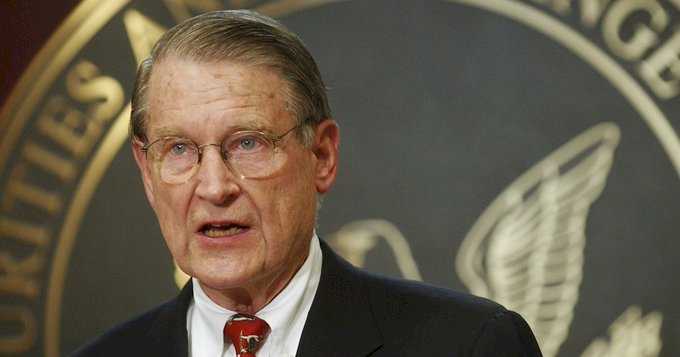
View 173 times
The U.S. Secret Service said it requested the increased waterflow for the Little Miami River, first reported by The Guardian, to ensure motorized watercraft and emergency personnel “could operate safely” while protecting the Republican vice president, whose home is in Cincinnati.
But critics immediately blasted the action as a sign of the vice president’s entitlement, particularly given the Trump administration’s focus on slashing government spending.
Richard W. Painter, who served as chief White House ethics lawyer under President George W. Bush, said on X that “it’s outrageous for the Army corps of engineers to spend taxpayer money to increase water flow in a river so @VP can go canoeing when budget cuts to the National Park Service have severely impacted family vacations for everyone else.”
The Corps of Engineers declined to address any financial impact of raising the river. Spokesman Gene Pawlik said the agency’s Louisville District temporarily increased outflows from the Caesar Creek Lake in southwest Ohio into the Little Miami “to support safe navigation of U.S. Secret Service personnel.” He said the move met operational criteria and fell within normal practice.
“It was determined that the operations would not adversely affect downstream or upstream water levels,” he said in a statement. “Downstream stakeholders were notified in advance of the slight outflow increase, which occurred August 1, 2025.” Vance’s birthday was on Aug. 2.
Vance spokesman Taylor Van Kirk said the vice president was unaware the river had been raised.
“The Secret Service often employs protective measures without the knowledge of the Vice President or his staff, as was the case last weekend,” he said via text.
The sprawling 2,830-acre Caesar Creek Lake has an unlimited horsepower designation and five launch ramps, according to the Ohio Department of Natural Resources website. A marina, campground and lodge are also located on site. The department provided two natural resources officers to assist the Secret Service with the Vance event, spokesperson Karina Cheung said.
The Vance family has already become accustomed to certain accommodations being made as they move about the world. During a recent trip to Italy, the Roman Colosseum was closed to the public so that his wife, Usha, and their children could take a tour, sparking anger among some tourists. The Taj Mahal also was closed to visitors during the Vance family’s visit to India.
Such special treatment isn’t reserved for one political party.
When Democratic Vice President Al Gore, then a presidential candidate, paddled down the Connecticut River for a photo opportunity in 1999, utility officials had opened a dam and released 4 billion gallons of water to raise the river’s level. That request, too, came after a review of the area by the Secret Service — and Gore also experienced political pushback.
Gore’s campaign said at the time that he did not ask for the water to be released.

View 177 times
#Israel announces plan to retake Gaza City in another escalation of the war. Israel’s air and ground war has already killed tens of thousands of people in Gaza, displaced most of the population, destroyed vast areas and pushed the territory toward famine. The timing of another major ground operation remains unclear since it will likely hinge on mobilizing thousands of troops and forcibly evacuating civilians, almost certainly exacerbating the humanitarian catastrophe.
Prime Minister Benjamin Netanyahu had earlier outlined more sweeping plans in an interview with Fox News, saying Israel planned to take control of all of Gaza. Israel already controls around three-quarters of the territory.
Hamas rejected Israel’s current plans in a statement and said people in Gaza would “remain defiant against occupation.”
“Expanding of aggression against our Palestinian people will not be a walk in the park,” the group said.
Netanyahu had signaled plans for even broader war
An expanded offensive could widen discord between Israel and international powers, which have intensified criticism of the war amid reports of famine in Gaza but largely stopped short of concrete action. Australia and the United Kingdom urged Israel to reconsider.
Israel’s “decision to further escalate its offensive in Gaza is wrong,” British Prime Minister Keir Starmer said in a statement. “It will only bring more bloodshed. ... Both parties must step away from the path of destruction.”
Tensions could rise further if Netanyahu follows through on the more sweeping plans to take control of the entire territory.
Israel’s current plan, announced after the Security Cabinet met through Thursday night, stopped short of that, and may be aimed in part at pressuring Hamas to accept a ceasefire on Israel’s terms.
It may also reflect the reservations of Israel’s military chief of staff, Lt. Gen. Eyal Zamir, who reportedly warned that expanding operations would endanger the remaining 20 or so living hostages held by Hamas and further strain Israel’s army after nearly two years of regional wars.
The military “will prepare to take control of Gaza City while providing humanitarian aid to the civilian population outside the combat zones,” Netanyahu’s office said in a statement after the meeting.
`There is nothing left to occupy’
Israel has repeatedly bombarded Gaza City and carried out numerous raids there, only to return to neighborhoods again and again as militants regrouped. Today, it is one of the few areas in Gaza that hasn’t been turned into an Israeli buffer zone or placed under evacuation orders.
A major ground operation there could displace tens of thousands of people and further disrupt efforts to deliver food to the hunger-stricken territory.
It’s unclear how many people reside in the city, which was Gaza’s largest before the war. Hundreds of thousands fled under evacuation orders in the opening weeks of the war, but many returned during a ceasefire at the start of this year.
Palestinians were already anticipating even more suffering ahead of the decision, and at least 42 were killed in Israeli airstrikes and shootings on Thursday, according to local hospitals.
“There is nothing left to occupy,” said Maysaa al-Heila, who is living in a displacement camp. “There is no Gaza left.”
Of those killed Thursday, Nasser Hospital said at least 13 were seeking aid in an Israeli military zone in southern Gaza where UN aid convoys are regularly overwhelmed by hungry crowds and people stealing food to resell it. Another two were killed on roads leading to nearby sites run by the Israeli-backed Gaza Humanitarian Foundation, an American contractor, according to the hospital, which received the bodies.
GHF said there were no violent incidents at or near its sites on Thursday. Israel’s military said its forces did not fire in the morning and that it knew of no encounters in the area. The military zone, known as the Morag Corridor, is off limits to independent media.
Israel’s military offensive has killed over 61,000 Palestinians, according to Gaza’s Health Ministry, which does not say how many were fighters or civilians. The ministry is part of the Hamas-run government and staffed by medical professionals.
The United Nations and independent experts view the ministry’s figures as the most reliable estimate of casualties. Israel has disputed them without offering a toll of its own.
`We don’t want to keep it’
Asked in the interview with Fox News ahead of the Security Cabinet meeting if Israel would “take control of all of Gaza,” Netanyahu replied: “We intend to, in order to assure our security, remove Hamas there.”
“We don’t want to keep it. We want to have a security perimeter,” Netanyahu said in the interview. “We want to hand it over to Arab forces that will govern it properly without threatening us and giving Gazans a good life.”
Hamas-led militants triggered the war when they stormed into Israel on Oct. 7, 2023, killing around 1,200 people and abducting 251 people. Most of the hostages have been released in ceasefires or other deals but 50 remain inside Gaza. Israel believes around 20 of them to be alive.
Israeli opposition leader Yair Lapid said on Friday that the Cabinet’s plan would endanger them and would not advance Israel toward its objectives.
“This is exactly what Hamas wanted: for Israel to be mired on the ground with no purpose, without defining the day after picture, in a pointless occupation that no one understands where it is leading,” he said in a statement on X.
Hamas official Osama Hamdan told Al Jazeera on Thursday that the group would view Netanyahu’s proposal of an Arab-led force in post-war Gaza as linked to Israel. He warned it could further “plunge the region into new trouble.”
___
Wafaa Shurafa, Sam Metz And Joseph Krauss, The Associated Press
Shurafa reported from Deir al-Balah, Gaza Strip and Krauss from Ottawa. Associated Press writer Danica Kirka in London contributed.
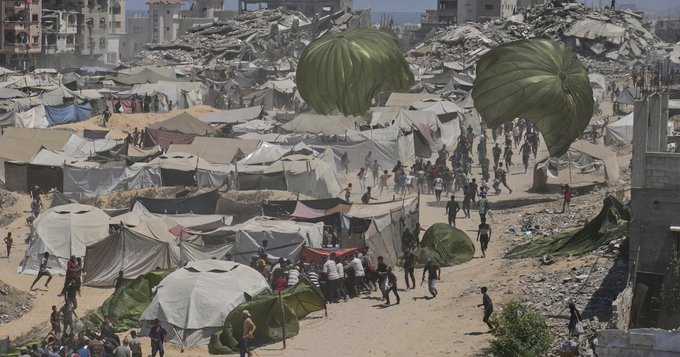
View 177 times
Global News on Umojja.com